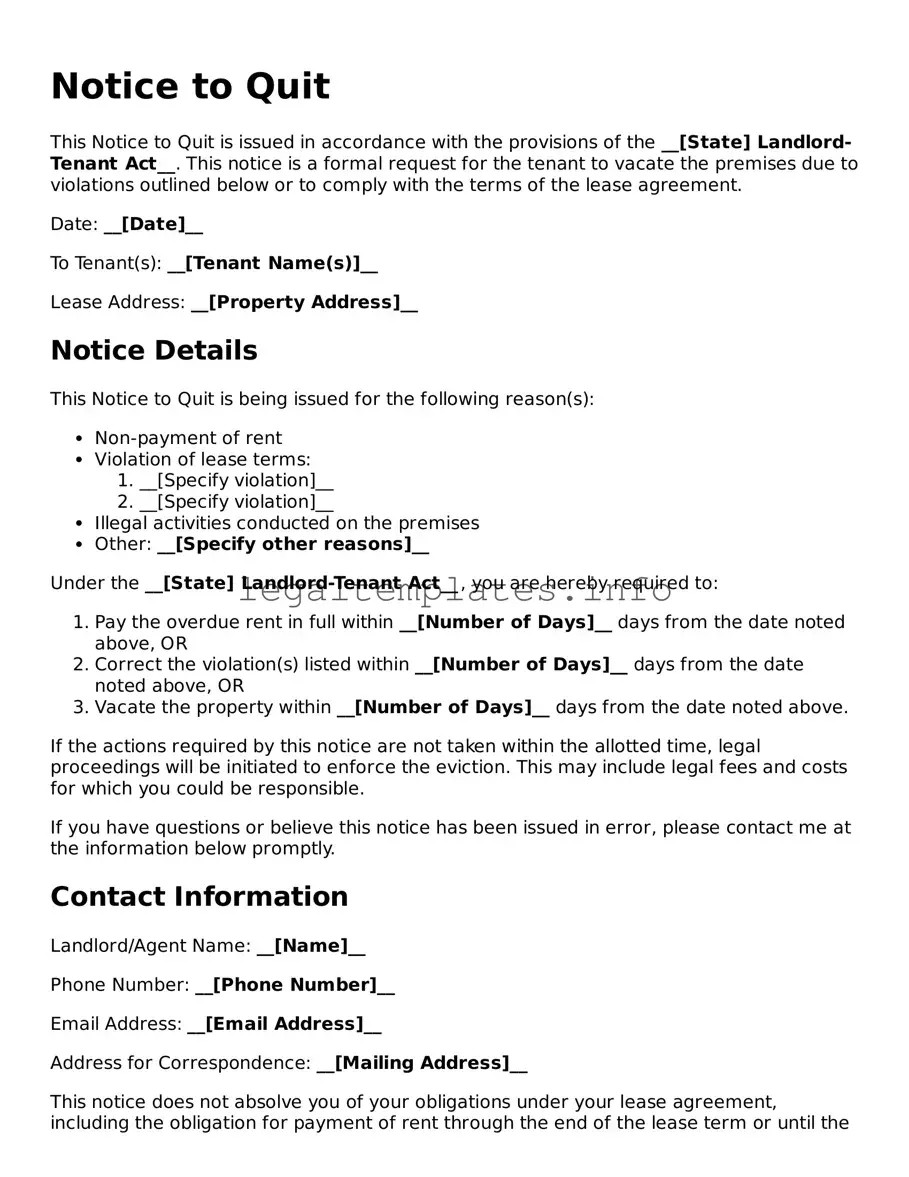Notice to Quit
This Notice to Quit is issued in accordance with the provisions of the __[State] Landlord-Tenant Act__. This notice is a formal request for the tenant to vacate the premises due to violations outlined below or to comply with the terms of the lease agreement.
Date: __[Date]__
To Tenant(s): __[Tenant Name(s)]__
Lease Address: __[Property Address]__
Notice Details
This Notice to Quit is being issued for the following reason(s):
- Non-payment of rent
- Violation of lease terms:
- __[Specify violation]__
- __[Specify violation]__
- Illegal activities conducted on the premises
- Other: __[Specify other reasons]__
Under the __[State] Landlord-Tenant Act__, you are hereby required to:
- Pay the overdue rent in full within __[Number of Days]__ days from the date noted above, OR
- Correct the violation(s) listed within __[Number of Days]__ days from the date noted above, OR
- Vacate the property within __[Number of Days]__ days from the date noted above.
If the actions required by this notice are not taken within the allotted time, legal proceedings will be initiated to enforce the eviction. This may include legal fees and costs for which you could be responsible.
If you have questions or believe this notice has been issued in error, please contact me at the information below promptly.
Contact Information
Landlord/Agent Name: __[Name]__
Phone Number: __[Phone Number]__
Email Address: __[Email Address]__
Address for Correspondence: __[Mailing Address]__
This notice does not absolve you of your obligations under your lease agreement, including the obligation for payment of rent through the end of the lease term or until the unit is re-rented, whichever comes first.
Issued this __[Date]__ day of __[Month]__, [Year]__.
Signature
__________________________________
(Landlord/Agent Signature)
__________________________________
(Print Name)
